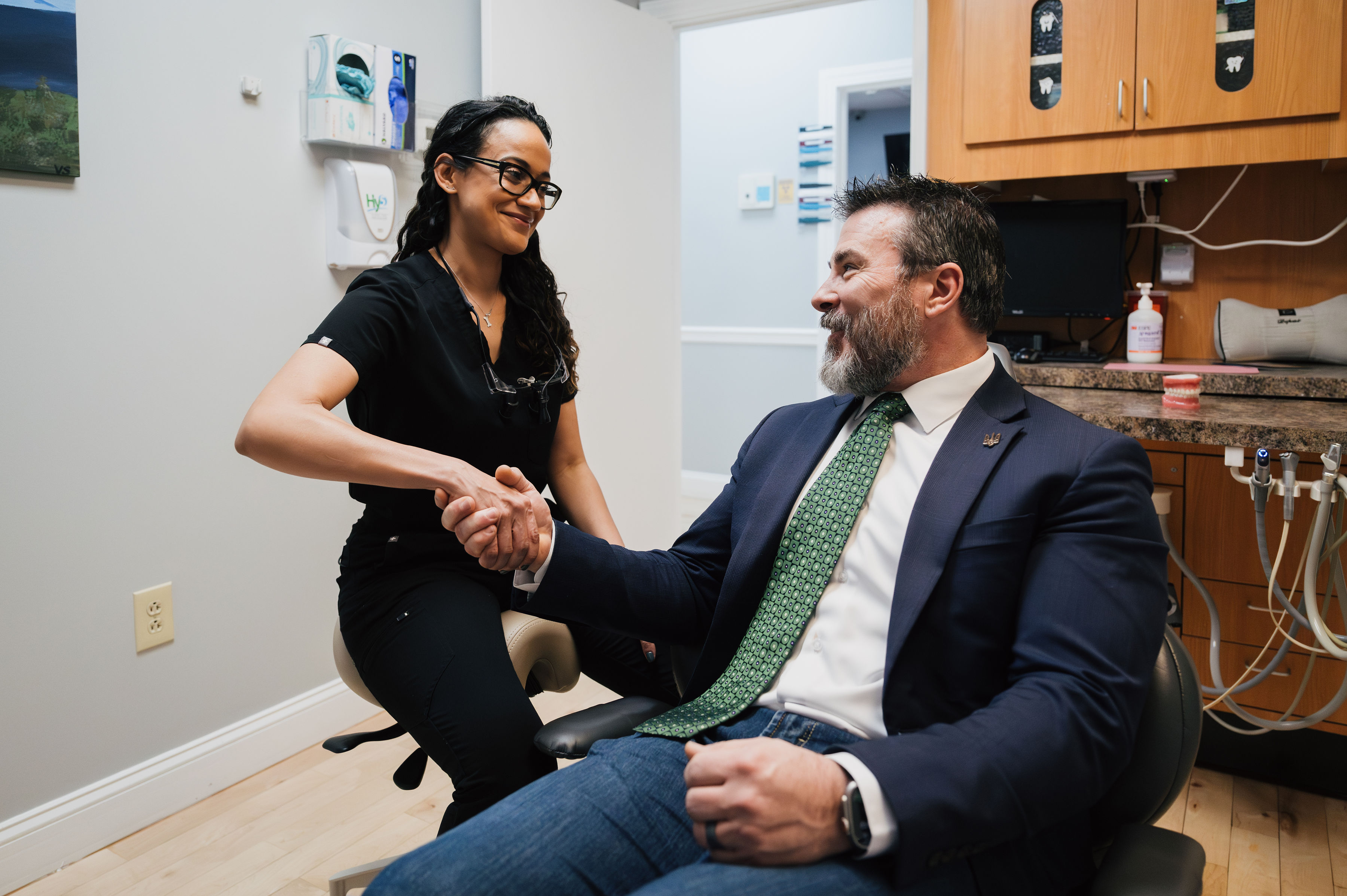Home Care

Your Role in Maintaining a Beautiful, Healthy Smile
A beautiful, healthy smile that lasts a lifetime is our ultimate goal when treating patients. But achieving that goal doesn’t stop in the dental chair—it depends greatly on your personal home care.
Good home care begins with eating balanced meals, reducing the number of snacks you eat, and correctly using the various dental aids that help control the plaque and bacteria that cause dental disease.
Tooth Brushing: Your First Line of Defense
Brushing your teeth at least twice a day (especially before going to bed at night) with an ADA-approved soft bristle brush and toothpaste is essential.
Follow these brushing tips for the best results:
- Place the brush at a 45-degree angle to the gums.
- Gently brush using a small, circular motion, making sure to feel the bristles against the gums.
- Brush the outer, inner, and biting surfaces of each tooth.
- Use the tip of the brush to clean the inside of your front teeth.
- Don’t forget to brush your tongue to remove bacteria and freshen your breath.
Electric toothbrushes are also highly recommended. They are easy to use and can remove plaque efficiently. Simply place the bristles of the electric brush on your gums and teeth and allow the brush to do its job, a few teeth at a time.
Flossing: Clean Where Your Brush Can’t
Daily flossing is the best way to clean between the teeth and under the gumline. Flossing not only helps clean these spaces—it disrupts plaque colonies from building up, preventing damage to the gums, teeth, and bone.
Here’s how to floss properly:
- Take 12–16 inches (30–40 cm) of dental floss and wrap it around your middle fingers, leaving about 2 inches (5 cm) of floss between your hands.
- Use your thumbs and forefingers to guide the floss.
- Gently insert the floss between teeth using a sawing motion.
- Curve the floss into a “C” shape around each tooth and under the gumline.
- Gently move the floss up and down to clean the side of each tooth.
Floss holders are a great alternative if you have difficulty using conventional floss.
Rinsing: A Simple Yet Effective Habit
It’s important to rinse your mouth with water after brushing and after meals if brushing isn’t possible. If you’re using an over-the-counter mouth rinse, it’s a good idea to check with your dentist or dental hygienist to make sure it’s appropriate for your needs.
Additional Dental Aids
Depending on your specific dental needs, your dentist or dental hygienist may recommend other home care tools such as:
- Interdental brushes
- Rubber tip stimulators
- Tongue cleaners
- Irrigation devices
- Fluoride treatments
- Medicated rinses
All of these can play a role in maintaining good dental home care and ensuring a lifetime of healthy smiles.
We can’t wait to connect!
Call 828-265-1112 or request an appointment online to set up your first visit. We’ll be in touch soon.
